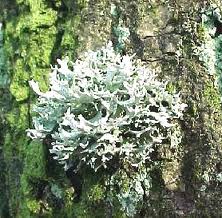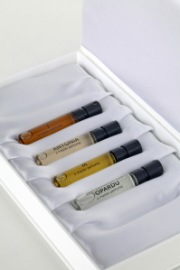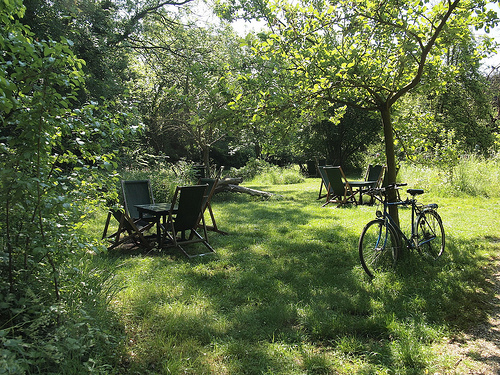Names can be misleading — and that is definitely the case with Tom Ford‘s Private Blend Arabian Wood. Though rumour has it that the perfume was originally a bespoke, unique creation for a sheikh, Arabian Wood is neither Arabian nor particularly woody. (It’s not very masculine, either.) Instead, it is a woody, floral chypre fragrance that takes you to a very verdant, mossy, flower-strewn forest floor in the middle of a secluded glen.
Whatever the truth to the rumour of Tom Ford creating a custom-blended perfume for a well-known, wealthy sheikh, Arabian Wood was released in 2008 as a fragrance exclusive to the Kuwait market, before being made available world-wide in 2009. Neiman Marcus provides Tom Ford’s press release description for the scent:
[T]his woody chypre was inspired by the extraordinary confluence of the Middle East’s past and present aromatic wonders.
Capturing the mystique of Arabia, a rare combination of precious woods, opulent green notes, rich florals, and exotic spices provides a footprint or modernity outlined in ethnic tradition.
This exotic experience opens with top notes of aromatic lavender with the bold floralcy of Bulgarian rose, freesia, orange blossom, and green galbanum, brightened with sparkling bergamot. These effervescent notes are enhanced with hand-picked rose de mai.
The heart pulses with the warmth and sensuality of lavish florals, including ylang ylang, rose absolute, jasmine, gardenia, and luscious honey and orris.
The base notes blend patchouli with cedarwood, oak moss, sandalwood, and honey, while tonka bean and radiant amber leave a distinct trail of opulence.
I always get extremely excited when I see a long list of notes, as it portends a fragrance with enormous depth, and Arabian Wood puts many fragrances to shame with a mind-boggling 28 notes. (Yes, I counted.) The most complete list comes from Nordstrom and reads as follows:
bergamot, freesia, lavender, orange blossom, Bulgarian rose, May rose, galbanum, gardenia, geranium, iris, jasmine, lily of the valley, rose, ylang-ylang, clove, honey, apricot, cedarwood, patchouli, sandalwood, vetiver, moss, oakmoss, amber, tonka bean, vanilla, honeycomb, raspberry.
Arabian Wood opens on my skin as the most classic of aromatic fougères. For those of you who are unfamiliar with the term, a fougère is a category of fragrance — often colognes, but not always — that have a citrus component atop a strongly herbal base that usually consists of lavender, coumarin, oakmoss, or some combination thereof. Here, Arabian Wood begins with a very traditional cologne opening of citrus with strong oakmoss that reminds me of Givenchy‘s Monsieur de Givenchy.
The scent is simultaneously light and aromatic, but with simply massive amounts of oakmoss. The first time I applied Arabian Wood, I went with a lesser dosage (about 2 big smears from the dab bottle), since moderation is often the wiser path with Tom Ford’s Private Blend line. But I was frustrated with the perfume’s projection so, the second time, I decided to apply almost three times as much. Quantity definitely impacts the nature of the moss with a lower amount creating something far more velvety, plush, fresh and brightly green in image. At the higher application level, the moss was much more akin to that in traditional chypres or fougère fragrances: dusty, dry, grey, mineralized, and with a sharply bitter component. Also fluctuating was the prominence of the galbanum. At a lower level, the galbanum in Arabian Wood isn’t sharply, bracingly dark but, rather, softer and with a gentler, earthier tone that rather evoked the damp, loamy floor of a forest.
On both occasions, however, there were other notes lurking under the strong green facade. As the minutes passed and that initial burst of cologne-like citrus faded, there were noticeable accords of: herbal lavender; peppery cedarwood; earthy, dark, rooty vetiver; and what definitely felt like dry hay (coumarin). I don’t particularly like lavender but, here, it is modest and very well-blended into the very aromatic, herbal, sum total. When you throw in the very muted, almost ghostly hints of red-brown cloves, fuzzy geranium, and the slow start of a mossy patchouli, the final vision is really hard to escape: Arabian Woods transports you to the forest.
It’s a small, secluded part of an incredibly green Irish valley, a small nook where tall, red-brown trees cast shadows over the forest floor filled with touches of purple from almost hidden lavender bushes, darkened green-black galbanum, wet black soil, and a vast carpet of moss that varies from the brightest Emerald Isles green to the more pungently, lichen-like grey. There is simply nothing about the desert or Arabia in the picture that the perfume weaves — now or later.
The initial burst of aromatic fougère and bitterness makes Arabian Wood a fragrance that, at first glance, seems very masculine. But, like the name, that too is misleading. With every passing minute, the citrus element wanes, while the green notes from the oakmoss, galbanum and geranium soften. The patchouli becomes more prevalent, but this is no 1970s, dirty, hippie, black patchouli. It’s softly mossy, almost green, and infinitely velvety. It’s beautifully blended in, just adding the perfect touch of sweetness to the notes. Arabian Wood is a true chypre under every possible definition of the term. I don’t know quite how Tom Ford managed it given the IFRA/EU restrictions on oakmoss, but this doesn’t smell like an ersatz, quasi or fake chypre at all!
 Within less than the twenty minutes, the flowers arrive on the scene, pushing their way up through that earthy, rooty soil and slowly taking over the moss. The florals march in two by two, the rose and jasmine, unfurling in slow bloom. Trailing in their footsteps is orange blossom and ylang-ylang, then honey, and, finally, a touch of powder taking up the rear. It feels like a procession of notes determined to eradicate any vestige of sharpness, bitterness or strong masculinity from that opening. Almost like light coming in through the trees to brighten the darkness and the overwhelming blanket of green. The softening of the perfume extends also to its sillage. Arabian Wood drops sharply in projection after the first hour, hovering a bare inch (if that) above the skin. It is possibly the gentlest chypre I have experienced in a while.
Within less than the twenty minutes, the flowers arrive on the scene, pushing their way up through that earthy, rooty soil and slowly taking over the moss. The florals march in two by two, the rose and jasmine, unfurling in slow bloom. Trailing in their footsteps is orange blossom and ylang-ylang, then honey, and, finally, a touch of powder taking up the rear. It feels like a procession of notes determined to eradicate any vestige of sharpness, bitterness or strong masculinity from that opening. Almost like light coming in through the trees to brighten the darkness and the overwhelming blanket of green. The softening of the perfume extends also to its sillage. Arabian Wood drops sharply in projection after the first hour, hovering a bare inch (if that) above the skin. It is possibly the gentlest chypre I have experienced in a while.
By the start of the second hour, the perfume is truly pretty. The sandalwood has joined the party on the forest floor. It’s beautifully creamy, and its richness feels very much like the real thing, not a synthetic version. Together with that velvety patchouli, it’s a strong backbone for much of the perfume’s remaining development. The whole thing is a perfectly balanced, nuanced, layering of notes where jasmine and orange blossom vie with the rose, all over a rich woody base of moss, patchouli, sandalwood and honey, with powder and faint touches of peppery cedar. There is great sweetness in the scent that grows stronger with every hour, as more of the honey comes out. I also continue to smell something in the background that calls to mind coumarin’s dry hay notes but it is subtle. What I absolutely do not smell is any trace of lily-of-the-valley, gardenia, apricot, or raspberry to my nose; not on either of the two occasions that I tested the perfume.
By the start of the third hour, Arabian Wood is a sweetly honeyed, patchouli, sandalwood skin scent with very abstract floral notes. There is the feel of rose, jasmine and ylang-ylang, but it’s all blended into one very harmonious whole where the individual components are not particularly distinctive. What is individually noticeable, however, is the the increasing powdery undertone to the perfume. It doesn’t smell like a clear, definite, iris accord, nor like Guerlain’s sort of powder. Rather, the floral notes just feel as though they’re being filtered through a light dusting of powder, almost a bit like sweet pollen. It has to be the orris but, if so, it’s orris and iris done very well. Perhaps the honey is the reason since that is now a much stronger component of the perfume.
Arabian Wood remains that way for another 6 hours when the tonka bean arrives, followed by muted vanilla and some musk. The perfume is now very much soft oakmoss-infused patchouli, sandalwod, honey, tonka bean, powder, lightly sweetened musk, and dry, amorphous woody notes. It’s almost like a Guerlainade feel in some ways, but not quite. Perhaps because it seems more modernized in some ways, as well as more woody. Whatever the reason, Arabian Wood remains that way until it finally recedes away. With the lesser dosage, the longevity clocked in at around 6.5 hours; using three times as much made the perfume last about 8.5 hours. But throughout, the sillage after the first thirty minutes was low.
Arabian Wood is a lovely perfume by itself, but I keep hearing how extraordinary it is when layered with some other Tom Ford Private Blend fragrances. Specifically, Private Blend Oud Wood, Bois Marocain, and Italian Cypress. I haven’t tried the combinations myself, but I can see how Arabian Wood’s slightly feminine, floral, chypre qualities would go beautifully with more spicy or dryly wooded fragrances. Whatever Arabian Wood’s sandalwood and muted cedarwood elements, it’s really not a woody fragrance, per se. It’s most definitely a floral chypre, after that very intensely masculine beginning where it was all aromatic fougère. Nonetheless, I don’t want that to put off male readers. This is a unisex fragrance, and Arabian Wood is definitely worn by men. In fact, I obtained my sample as a very generous gift from a male reader, Ross, who loves to layer it with Tom Ford’s Oud Wood.
All in all, I very much liked Arabian Wood, but I wasn’t swept away. It doesn’t feel distinctive enough in some ways. It has the advantage of being an exceedingly gentle, smooth, richly-nuanced chypre that isn’t frightening in bitterness or pungency, but I think those who have a vast knowledge of vintage chypres may not be brought to their knees. And, for me personally, the extremely low sillage was very frustrating. I wanted more of the plush, soft, patchouli-sweetened mossiness, but at times, I had to forcibly inhale at my arm to detect the notes. Even applying three times the amount that I usually use for Tom Ford’s Private Blend didn’t solve the problem. I have problems with longevity, not sillage, and the Private Blend line is usually extremely powerful, so I have to admit to some surprise.
On Fragrantica, the votes are completely split on the issue of sillage. There are 6 votes for “soft,” 7 for “moderate,” 5 for “heavy,” and 4 for “enormous.” Clearly, it all depends on the person’s skin. The comments are also split, with some finding the perfume very soapy, others saying it has absolutely nothing arabian or woody about it, a few arguing the fougère -vs- chypre issue, and a good chunk saying it is a very feminine fragrance. One person even compared it to vintage Cabochard Extrait, which brings me to another point.
The perfume blog, EauMG, had a very interesting list of similar perfumes or “dupes,” if you will:
… [as] this perfume settles, I get something that reminds me of the new formulation of Lancome’s Magie Noire, Piguet Bandit and Maja. [¶] […] Give Arabian Wood a try if you like perfumes like Balmain Ivoire, Jacomo Silences, Maja, Guerlain Vega, Van Cleef & Arpels First, and/or Piguet Bandit. [Emphasis added.]
I’ve tried most of those fragrances (though it’s been an exceedingly long time ago for some), but on my skin, Arabian Wood wasn’t as soapy as First and definitely didn’t have the ferocious, biting greenness (or galbanum) of Bandit. I can’t remember vintage Ivoire well enough now to compare the two, but I can see some definite similarities with Jacomo‘s Silences. Either way, the comparisons prove my point that Arabian Wood may not wow any vintage collector of chypres, though it is a great choice for anyone who can’t get their hands on those classics in their true (unreformulated) form.
I think Arabian Wood is a fragrance that would be incredibly sexy on a man, and quite alluring on a woman. There is a sophistication and elegance to the smoothness of the scent, a degree of luxurious depth and richness, and a subtle hint of mystery. It may be like a lot of vintage chypres — but there aren’t any vintage chypres that sold in stores today and exceedingly few regular, commercial ones! As such, Arabian Wood is a scent that will stand out. And, it’s definitely one worth looking into.





















